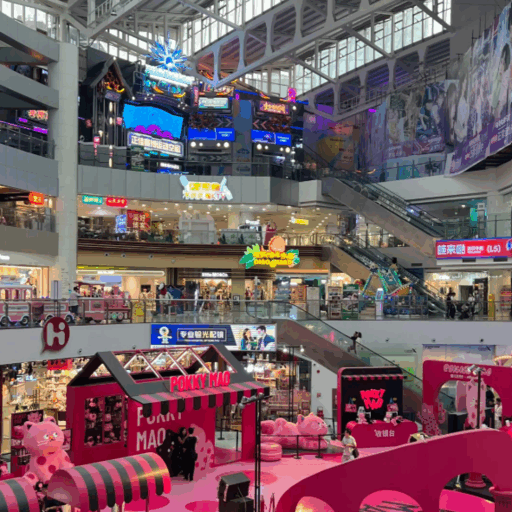The capital of China, Beijing, is bustling with life and is a unique mix of culture, history, and modernization all in one, which will undoubtedly entice travelers. The city not only offers breathtaking ancient sights but also rapidly progressing contemporary avenues, both of which are rich in unforgettable experiences. Whether you are a history enthusiast wanting to visit century-old temples and palaces, a foodie wanting to indulge in authentic Chinese food, or an adventure seeker ready to navigate through the vibrant hutongs, Beijing has it all. This guide aims to take you on a complete journey through the must-visit places in Beijing, so you can enjoy every aspect the city has to offer. Hence, prepare yourself to learn about famous places, some off-the-beaten-path locations, and helpful advice that will help you utilize your time effectively during your visit. Let us welcome you to the ultimate starting point for your adventure in Beijing.
What are the Top Attractions in Beijing?
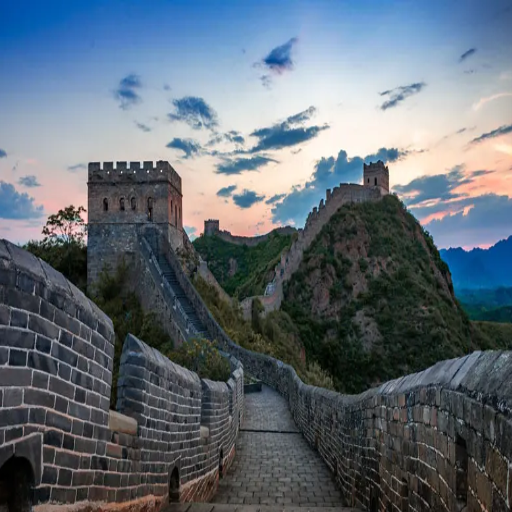
An Overview of the Chinese Imperial Palace
Translated to “Gùgōng” in Chinese, the Forbidden City is a massive imperial palace complex that served as the center of Chinese politics and ceremonies for almost five hundred years. Built during the Ming Dynasty in 1420, this UNESCO World Heritage Site comprises more than 980 buildings and covers about 180 acres, making it the largest palace complex in the world. Its golden rooftops, symmetrical design, along with intricate carvings, capture the domineering presence of traditional Chinese aesthetics and imperial authority, showcasing China's unrivalled architectural prowess.
Guests enter the Meridian Gate, which leads to a series of massive courtyards and ceremonial halls, including the Hall of Supreme Harmony, where emperors performed lavish ceremonies. On the Inner Court axis lies the emperor’s and his family’s residential area, which gives them a peek into the daily lives of the royal family.
The Dragon Staircase is one of the many magnificent features within the Forbidden City, which reveals China’s rich history and high level of craftsmanship. Make sure you have a good pair of shoes on, because navigating through this imperial jewel comes with plenty of walking.
Visiting the Great Wall of China
Widely known as one of the most remarkable wonders to exist in the world, the Great Wall of China extends more than 13,000 miles while traversing jagged mountains, barren plains, and sprawling deserts. It was primarily built to safeguard the contiguous Chinese states from foreign attacks, while also serving as a brilliant work of art. This strategic wonder dates back over 2000 years, with ancient construction commencing as early as the 7th century BCE and continuing through the Ming Dynasty, when many of the sections we admire today were built.
Depending on the region, the wall itself is made up of a mixture of materials, including tamped earth, wood, stone, and sturdy bricks. Throughout the structure, you will find barracks, watchtowers, and other military installations that showcase several centuries of strategic military effort. Notable sections, such as Badaling and Mutianyu, are remarkably well-preserved, so much so that these areas attract hundreds of tourists who seek panoramic views and an immediate immersion in history.
While it is possible to visit the Great Wall, it is a unique opportunity that presents many routes to this breathtaking structure. There are easier paths and steeper ones for experienced hikers. Strolling along the undulating ridges provides unmatched views of the mountainous scenery, while the Wall itself serves as a physical and symbolic link to China’s rich historical legacy.
Exploring the Features of Tiananmen Square
Tiananmen Square holds the title as the world’s largest Public Square, located at the heart of Beijing, China. As modern China’s political center, it spans an area of 109 acres. It is bordered by pillars of historical and architectural marvels, such as the Great Hall of the People to its west, the National Museum of China to the east, and the famous Tiananmen Gate to the North.
Over the years, China’s national celebrations and rallies have been hosted at an international level at the iconic Tiananmen Square, giving the square great historical significance. Positioned at the center of the square is the Monument to the People's Heroes, a monumental granite monument erected in honor of the sacrifices made for the republic. Visitors are also welcome to pay their respects to the founder of the People's Republic of China at the Mausoleum of Mao Zedong, located on the south side of the monument. The splendid Tiananmen Square is a gathering place for millions of tourists every year, seeking the enchanting tales of history and culture that are intertwined in one location.
What are the Best Things to Do in Beijing?
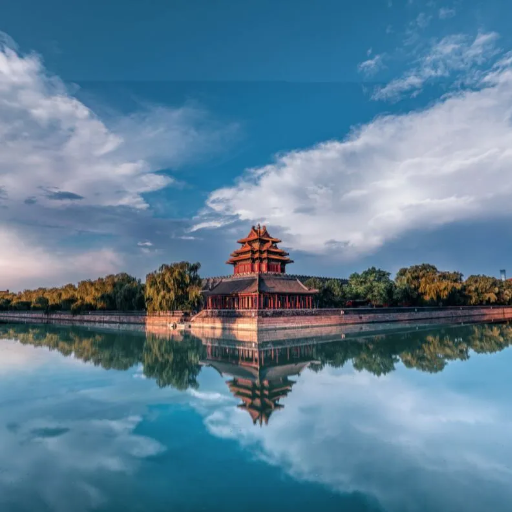
Beijing's Must-Experience Attractions
1. Explore the Forbidden City: Walk into China’s royal past by visiting the Forbidden City, or Palace Museum–the latter’s simpler name. Its massive complex has more than 900 buildings that display exquisite architecture and an art collection from the Ming and Qing dynasties. You will be awed by the beautiful artifacts, detailed scrolls of the Hall of Supreme Harmony, and the spatial Hall of Supreme Harmony.
2. Walk Along the Great Wall: The Great Wall is a must-try at least once in a lifetime, if you are in Beijing. Famous sections Badaling and Mutianyu have stunning views to offer, along with proper visitor amenities. For a quieter experience, try the restored Jinshanling section or the remote Simatai area, where nature and relics coexist in harmony, free from tourist bustle.
3. Visit the Temple of Heaven: The Ming and Qing emperors of China used tai chi to pray for good feasts and harvests. Today, the Temple of Heaven remains a peaceful spot to walk through, trimmed gardens filled with gardeners tending plants and musicians playing social concerts.
4. Explore Hutongs: Throughout Beijing, you can find hutongs, ancient alleyways characterized by closely spaced traditional courtyard houses. They showcase local culture. Visit popular places like Nanluoguxiang, where you'll find lots of modern boutiques, eateries, and cafes, or take a rickshaw ride through less popular but historically charming hutongs.
5. Walk Around The Summer Palace: Kunming Lake and Longevity Hill, the heart and main attractions, offer scenic boat rides and breathtaking views. Take part in the Long Corridor, a richly painted corridor that portrays classic tales from Chinese lore. The Summer Palace is another garden masterpiece of Chinese construction that features a seamless blend of naturalistic and architectural beauty.
6. Visit the 798 Art District: This lively artistic district features modern galleries, studios, and cafes in repurposed industrial buildings, and is ever-growing as new businesses and structures emerge. The 798 Art District is a great place to interact with groundbreaking exhibitions from local artists, sculptures, and skin-tingling exhibit pieces.
7. Experience the Best of Beijing Cuisine: The famous Peking Duck is a must-try dish while in the capital. It is also a well-known fact that the history of Beijing's renowned food is no less magnificent than the city itself. While wandering the city, be sure to grab street food from marketplaces like Wangfujing Snack Street and satisfy your appetite with local specialties like jianbing (savory pancakes) or tanghulu (fruit skewers with candy).
Each of these activities contributes to telling the endless story of Beijing's culture, history, and modern development, making it a timeless city that invites you in with every turn.
Offbeat Experiences in the Hutong Areas of Beijing
You can find two things in Beijing: traditional context and local life, through its hutongs. Enjoying a walk in these narrow streets can help visitors discover various treasures, such as tiny heritage shops that sell paper cut art, silk embroidery, and artisanal teapots. Participating in a hutong food tour lets you taste authentic dishes like zhajiangmian (soybean paste noodles), dumplings, and many more, while learning about their significance in local culture. For food lovers, this offer is unmatched.
It allows for leisurely travel, so you can savor the architectural details of the old courtyard homes (siheyuan) and the charm of the historic neighborhoods. Another unique experience is participating in traditional Beijing calligraphy workshops or dumpling-making with local families, which reveal glimpses of local life.
For those who appreciate history, some of the hutongs, such as Nanluoguxiang and Yandaixiejie, have historic structures that tell tales of several centuries, essentially acting as a living museum of Beijing's history. Restored historical buildings are intertwined with contemporary boutiques, art galleries, and cafes, giving these streets a warm, nostalgic feel. The hutongs are more than just routes in the city–they are routes through history.
Cultural Visits: Temple of Heaven and Summer Palace
The Temple of Heaven, constructed in the early 15th century during the Ming Dynasty, stands as an architectural masterpiece and a site of immense spiritual importance. This UNESCO World Heritage Site was where emperors conducted elaborate rituals to pray for good harvests, symbolizing the connection between heaven and earth. The complex spans approximately 2.7 million square meters and includes iconic structures like the Hall of Prayer for Good Harvests, renowned for its circular design and vibrant blue-tiled roof. In modern times, guests can walk around its tranquil park areas, where tai chi is practiced, and enjoy the artwork in its historic buildings.
The Summer Palace, another remarkable cultural site, lies to the northwest of central Beijing. These structures were once a retreat for emperors in the Qing Dynasty, and Kunming Lake, along with Longevity Hill, are riveting landscapes within the sprawling 742-acre complex, marked by decorated pavilions, bridges, and halls. The Summer Palace is also known as the finest example of a ‘natural’ Chinese garden, where nature and artificial structures, such as earth mounds, terraced hills, pavilions, and covered walkways and bridges, are flawlessly interconnected. Visitors can cruise across the calm waters of the lake to the base of the Tower of Buddhist Incense, walk the Long Corridor —a picturesque, covered walkway richly painted with murals, or ascend the tower's stairs to marvel at the view.
They are highly recommended places to visit for learning more about Beijing's rich cultural history. Both locations provide insight into the spiritual, artistic, and political history of imperial China.
Where to Eat When Visiting Beijing?
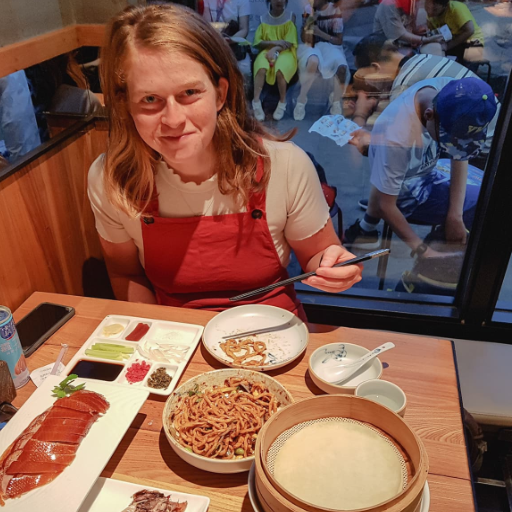
Best Places to Enjoy Peking Duck
Beijing’s Peking Duck is a must-try delicacy for every tourist across the globe. The dish has crispy skin with tender meat, and is known for its extraordinary taste. Below are some of the best places where you can enjoy Peking Duck:
Quanjude Roast Duck Restaurant: Quanjude has over 150 years of history serving flawless Peking duck from around the world and is synonymous with Peking Duck. This famous chain offers one of the best roasting services for duck and also provides a pleasing flavor. This restaurant is widely prevalent among tourists and locals due to its elegant presentation and extensive menu.
Da Dong Roast Duck: The place where Peking Duck is less greasy is Da Dong. This restaurant offers a traditional side of duck but also has a range of side dishes that suit the taste of many guests.
Siji Minfu Roast Duck: Siji Minfu is also well recognized for its lower prices compared to the quality of duck served. A good duck taste and focused service guarantee a perfect meal for everyone.
Bianyifang: One of the oldest, if not the oldest, restaurants in Beijing that serves Peking Duck, King’s Joy Ch'ienmen focuses on modern interpretations of dishes tailored to appeal to contemporary tastes while maintaining its history.
King’s Joy Ch'ienmen: Takes a more modern stance on Peking Duck, highlighting its sustainable approach. King's Joy Ch'ienmen prides itself on a higher-class felt.
Bianyifang diffuses the feel of contemporary Beijing, while King’s Joy Ch'ienmen serves more modern plates suited for fashionable tastes. All reinterpret the widely loved Beijing treasure in different authentic ways.
Night Markets: A Culinary Adventure
Like the name suggests, night markets operate after the sun sets and have stunning atmospheres and breathtaking street foods. From grilled meats to elaborate dumplings, there is street food for every type of appetite and preference. Several countries offer their special dishes, which truly bring these markets to life and add more vibrancy to the cultures throughout the world.
When thinking about night markets, one doesn't just think about food. These markets also serve as hotspots for art and music, with their vivid and colorful decor, as well as for locals. Moreover, the shopping options are endless, ranging from cultural textiles to handmade things. It is guaranteed that these markets with their magical offerings will attract tourists, embodying tradition, curiosity, and exploration.
Dining Experiences in Wangfujing
While you are out shopping in the busy shopaholic Wangfujing area, you should know that Wangfujing also boasts a multitude of restaurants alongside shops, all placed within the lively heart of Beijing. Wangfujing specializes in culinary traditions from around China, as well as some from foreign countries. You will find heartwarming northern-style noodles, spicy guozi food from Sichuan, and dim sum from Canton heavily populated in Wangfujing. And if you're a wandering food lover, Wangfujing offers fried skewers of fruit, perfumed skewers, honeyed slabs, and perfectly designed fried dumplings.
Moving on to more daring dishes, Wangfujing has imperial scorpion, starfish, and even centipede skewers. These dishes show the bold side of the street food culture in Wangfujing. Wangfujing allows you to sit in entirely tasteful restaurants and even in spots where you won't get bored while enjoying your meal. Regardless of whether you're eating a lavish feast or fast food, Wangfujing truly represents the food culture of Beijing.
What is the History and Culture of Beijing?
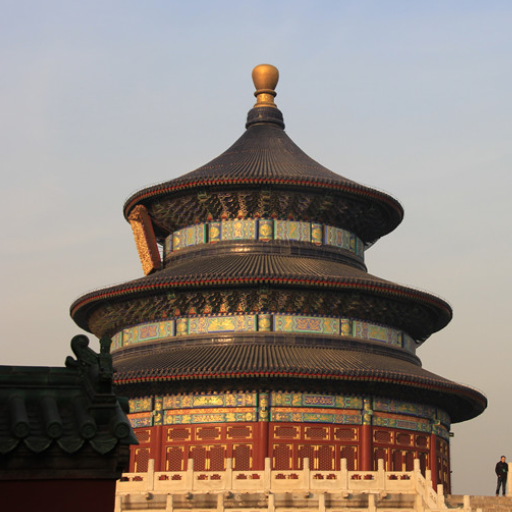
Tiananmen and Its Importance in History
Located at the northern edge of one of the largest public squares in the world, Tiananmen, or “Gate of Heavenly Peace,” acts as a powerful symbol of China’s dynamic history and cultural identity. This gate was built during the Ming Dynasty and is engrained within the history of China, as it served as the main gate to the Imperial City and the Forbidden City, taking great part in imperial affairs and state ceremonies.
The gate not only has architectural significance, but it also serves as a reminder of important events that have occurred in the past. The area surrounding the gate has witnessed many pivotal moments in China, including the unveiling of the portrait of Mao Zedong in 1989 and the founding of the Republic of China in 1949, which are considered revolutionary events in China's history.
In terms of identity, Tiananmen is both a static and dynamic symbol of China's identity. It also serves as a triad for national festivities like the National Day parade, where multitudes come to watch the manifestation of solidarity and national pride. To tourists, it is a landmark that represents a blend of modern and ancient civilizations, a reminder of China's ever-changing story.
Guided Tours Of Historical Landmarks And Museums In Beijing
Beijing is famously known for its rich history, offering a range of sites, such as the Forbidden City or the Palace Museum, which is an extravagant museum showcasing multiple imperial artifacts. Not only does it serve as a shopping area, but it is also a historical landmark that visitors adore. Like the Museum of China, the Forbidden City contains many historical items that serve as a crucial mark in history.
Other historical landmarks, like the Summer Palace, take tourists back in time to see how emperors used to govern their areas. It is widely known that the area where the Summer Palace is located was primarily for the pleasures of the royal families, which essentially makes it a beautifully crafted garden. Similar to architectural buildings is the Temple of Heaven, which offers a majestic experience to viewers while also providing insight into the Ming dynasty. It gives a view of ancient dynasties along with excellent artistic skills.
What are the Must-See Parks and Temples in Beijing?
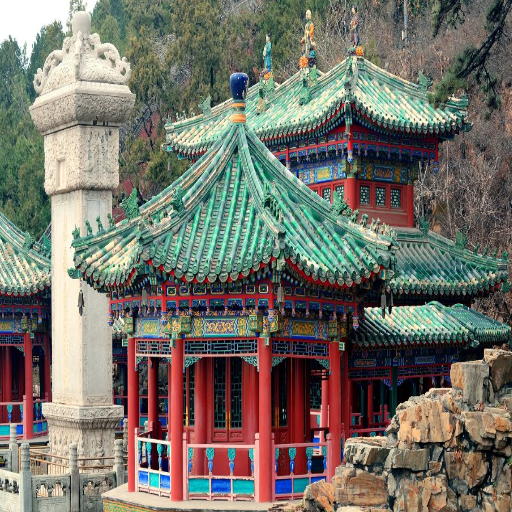
Temple of Heaven Park: An Area for Worship
During my visit to the Temple of Heaven Park, the peaceful natural surroundings, combined with enhanced views filled with extraordinary architectural beauty, struck me at first glance. This wondrous, sacred place, situated in central Beijing, was visited by Ming and Qing emperors to conduct holy rituals and pray fervently for a bountiful harvest. The park's symmetrical constructions and meticulous planning represent how the ancients viewed the axis of earth and heaven. Strolling through the iconic Hall of Prayer, I could feel that centuries ago, deep reverence was being showered on this space.
Aside from the history, the Temple of Heaven Park possesses, it is a peaceful retreat from the city of Beijing. Walking among the ancient cypress trees and other flora is a genuinely relaxing experience. Residents of the city congregate at the park every day to do tai chi, play traditional music, or relax in the quiet. The park is more than just cultural—it’s alive. It’s a city feature that provides much-needed space and embraces history alongside daily activities. Walking around the park helped me understand and appreciate the history of Beijing, along with its still-important places of worship.
Exploring the Lama Temple
Easily one of the most magnificent places I visited in Beijing is the Lama Temple, also known as the Yonghe Temple. The architecture is intricate and is filled with color, carvings, and details, which feel so ancient that I thought I was in a different world full of spirituality. While I passed through the temple gates, the first thing that welcomed me was the relaxing and calming chants, paired with the burning incense. Some of the most astonishing pieces of art I have ever seen were the giant Buddha statues that towered over people with astonishing heights.
In my explorations, I noticed how Han Chinese and Tibetan Buddhist cultures came together in the temple’s features. The prayer wheels, murals, and golden roofs of the temple looked like parts of a singular devotion that told a story of a blended culture. One of my favorite experiences was viewing the Maitreya Buddha, a statue over 26 meters tall, carved from a single chunk of sandalwood. It made me think of the skill and commitment that must have been put into it.
My visit to the Lama Temple truly added value to my life and let me better understand the spirituality and culture of Beijing. It also made me feel the devotion and calm that the temple exudes. Apart from the temple’s architecture, it becomes now a beacon of devotion and exudes an energy of peace. Rather than just a visit to a historical landmark, the temple is an eternal convergence of faith, a celebration of artistic craftsmanship. This has now become one of the best experiences of my life.
Resting In The Summer Palace Gardens
Resting In The Summer Palace Gardens' experience is like a Dream that every traveler to this wonderful place has been and will be transported into a world of calmness and natural scenery. Like walking through a magical world where lively green bushes and trees border pathways. The pavilions and bridges cast in delicate Kunming lake subwater, with brilliant, placid, and stunning water, would need a dazzling Chinese setting. The gentle winds and rustling of nearby trees further away while bird songs seem to be playing from far away and the water in the sides glowing r of peacefulness drowning the constant and fast nhum whee the city felt far behind was wondrous.
The best part of my trip was seeing the sun go down, its soft light setting everything around it aglow. The water light glimmered, which created a perfect view that seemed almost unreal. That moment perfectly framed the Summer Palace Gardens - experiencing calm, awe, and a sense of sync with nature in the midst of a historical wonder. It was something that I will remember for the rest of my life.
Frequently Asked Questions (FAQs)
Q: What places should I prioritize in a day trip to Beijing?
A: The options most recommended for a single day in Beijing would be the Temple of Heaven, the Forbidden City, and, of course, the Great Wall. One can also consider the Summer Palace, mainly due to its beautiful Kunming Lake and exquisite gardens. The Beijing subway also provides great navigational support to other places, so moving around these landmarks is easy.
Q: How did Mao impact the history of Beijing?
A: Besides being related to the founding of the People's Republic of China, Mao Zedong made a sizable and lasting impact on the history of Beijing. You can find his mausoleum at Tiananmen Square. The neighborhoods, as well as the authoritarian sights of cultural practices and revolutions, also pay a lot of tribute to him for the support of his immense legacy to Beijing.
Q: How do I best traverse the hutong neighborhoods in Beijing?
A: The best ways to roam about and get a feel of the old, charming, and traditional places are on foot and by bike. It is a rare sight indeed to see the classic courtyard-style houses that most alleys or old towns typically have, getting filled with people. Like other ordinary places, you can also find group tours that help you learn about the culture and history of the people.
Q: Where can I find traditional tea houses in Beijing?
A: You can visit the Tea House at the Summer Palace or one located in the hutong areas. There, you may witness a tea ceremony, partake in different varieties of tea, and learn about their significance.
Q: What is Qianmen, and why should I visit it?
A: Qianmen is an iconic area near Tiananmen Square, famous for its shopping and cultural landmarks. It has a lot of shops and restaurants, and captures both the new and old feel of Beijing quite well. It is also a lesser-known site, making it easy to visit key attractions in Beijing.
Q: What are the best ways to stay in Beijing for a week?
A: I recommend the Dongcheng or Xicheng districts, as they are centrally located and have good hotels for a week-long stay. You can stay in hotels, hostels, or traditional courtyard guesthouses to experience the local culture. Don't forget to take the Beijing subway to navigate around the city efficiently.
Q: Which museums do you recommend visiting in Beijing?
A: In Beijing, the National Museum of China and the Capital Museum are both fantastic options to study Chinese history. Additionally, the Beijing 798 Art District is a must-see for contemporary art. Details of contemporary Beijing art are also thriving in the Capital Museum, where tourists can glimpse into the city’s history.
Q: How important are the Beijing 2008 Olympics in the modern development of the city?
A: The city underwent serious modernization with the Beijing 2008 Olympics, constructing the Bird’s Nest Stadium and Water Cube, while simultaneously boosting tourism and cementing Beijing’s position internationally.
Q: How was your experience visiting the Forbidden City?
A: Expect to catch a view of the imperial past of the Chinese Dynasty with the Ming Dynasty antiques on display, from within the world’s largest palace complex filled with countless halls and stunning gardens. Make sure to bring comfortable walking shoes and arrive early to avoid the crowds.
